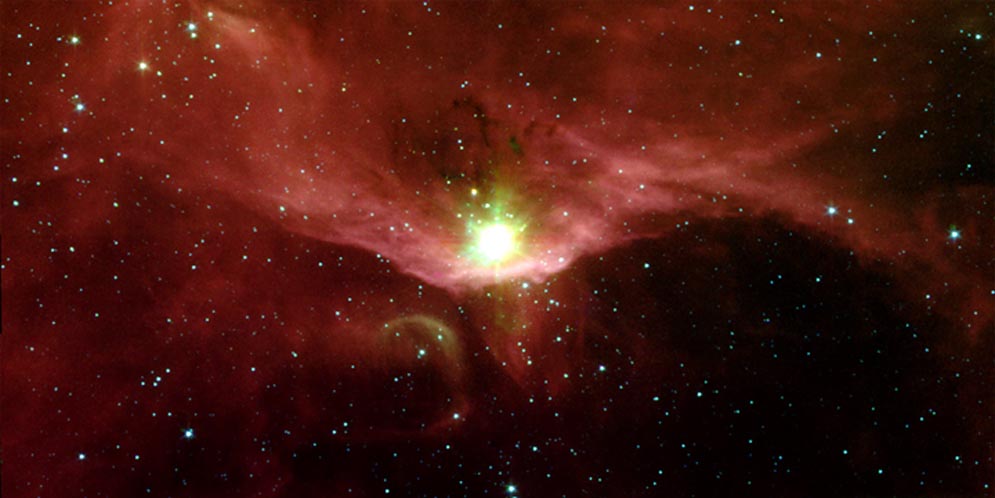
Description: Star Formation Nebula
Position (J2000): RA 22h 19m 16.6s Dec 63° 18' 37.1"
Constellation: Cepheus
Distance: 3,000 Light Years
Field of View: 31.2 x 15.8 arcminutes
Orientation: North is 43.1° right of vertical
Image Credit: NASA/JPL-Caltech/G. Melnick (Harvard-Smithsonian CfA)
Release Date: May 11, 2004
ABOUT THIS IMAGE:
In the quest to better understand the birth of stars and the formation of new worlds, astronomers have used NASA's Spitzer Space Telescope to examine the massive stars contained in a cloudy region called Sharpless 140. This cloud is a fascinating microcosm of a star-forming region since it exhibits, within a relatively small area, all of the classic manifestations of stellar birth.
Sharpless 140 lies almost 3000 light-years from Earth in the constellation Cepheus. At its heart is a cluster of three deeply embedded young stars, which are each several thousand times brighter than the Sun. Though they are strikingly visible in this image from Spitzer's infrared array camera, they are completely obscured in visible light, buried within the core of the surrounding dust cloud.
The extreme youth of at least one of these stars is indicated by the presence of a stream of gas moving at high velocities. Such outflows are signatures of the processes surrounding a star that is still gobbling up material as part of its formation.
The bright red bowl, or arc, seen in this image traces the outer surface of the dense dust cloud encasing the young stars. This arc is made up primarily of organic compounds called polycyclic aromatic hydrocarbons, which glow on the surface of the cloud. Ultraviolet light from a nearby bright star outside of the image is "eating away" at these molecules. Eventually, this light will destroy the dust envelope and the masked young stars will emerge.
This
image was taken on Oct. 11, 2003 and is composed of photographs obtained
at four wavelengths:
3.6 microns
(blue) 4.5
microns (green) 5.8
microns (orange) 8
microns (red)